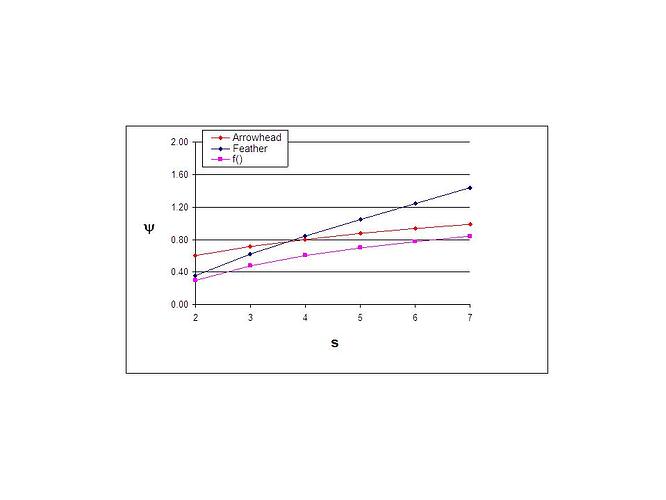[From Dick Robertson,2007.09.24.1000CDT]
Fantastic! I had completely forgotten this experiment/therapy/theory expansion. Your point that reorganization might be the big bug in such experiments is beautiful. What say you, Martin?
I’m still in touch with Pat. She invited me to a group in which she participates that meets monthly at the Glenview library–interested in flying saucers, science studies, etc. I’ll check out what happened next in her experiences with motion sickness.
Best,
Dick R
···
----- Original Message -----
From: Bill Powers powers_w@FRONTIER.NET
Date: Monday, September 24, 2007 5:43 am
Subject: Re: Perceptual distance measures
To: CSGNET@LISTSERV.UIUC.EDU
[From Bill Powers (2007.09.24.0409 MDT)]
Martin Taylor 2007.09.24.00.47] –
Rick Marken (2007.09.23.2115)] –
I’m copying here a few paragraphs I recently send to Warren Mansell. They
may have a bearing on the Lyell Illusion that’s being discussed.=======================================================================================
I once worked with a graduate student who was a former student of Dick
Robertson’s, Dick having been an intern in Carl Rogers’ Counselling
Center at the U. of Chicago along with Mary, even before I met her. Just
after Mary and I married, I gave a seminar along with Clark and
MacFarland at the counselling center (1957), and Dick has been aboard
ever since then. He recently retired from Northeastern Illinois
University where he pioneered the teaching of PCT for many
years.The graduate student suffered from motion sickness to a debilitating
degree, even on subway (Underground) trains and on buses. She wanted to
study it, so I wrote a program to use a (sideways) waterfall illusion to
measure after-“images” of motion (a transition-level
experiment). A computer screen was filled with moving dots, which ceased
to move when a beep sounded. At that point, the participant could affect
the rate of motion of the dots by using a mouse, the instructions being
to use the mouse to keep the dots stationary after the beep. Of course
that means making the dots move oppositely to the direction of the
illusion. The result was a very nice negative exponential decay of the
participant-caused motion, dying out to zero in twenty or thirty seconds.
This made the magnitude and time-course of the illusion directly
measurable. We were probably measuring the motion of fluid in the
semicircular canals!In refining the experiment and data-taking, this student and I passed
many trial versions of the experiment back and forth, and after a while I
began to have trouble with the program – some bug had crept into it so
the data were not being correctly reported – so I thought. Eventually,
we both had to admit that we had worn out the illusion, so neither of us
had it any more. We had reorganized it away. Not only that, but the
graduate student found that she no longer suffered from motion sickness.
Since that had been her main motivation for doing this thesis, she said
thank you very much and she was changing her thesis to some other
subject, since the old thesis had evaporated. (I’m copying this post to
Dick, and also to Rick Marken who is looking for PCT experiments for his
students at UCLA).I have felt for a long time that therapy takes precedence over studying
abnormalities. We may as well admit that psychological testing has
effects on the people we’re testing, so we might as well study changes
along with whatever else we think we’re measuring. And as long as we’re
doing that, we might as well select “experiments” that also do
people some good rather than harm.=======================================================================================
What occurred to me, of course, was that while doing Martin’s
experiments, the participants might have been reorganizing, so that
gradually, over time, the distortions would tend to disappear. Perhaps
the course of the experiments was short enough that this effect would not
appear, but if the comparisons were made in the same order every time,
there could have been some confusing adaptational effects – or even if
they were made in randomized order.It seems to me that this experiment calls for a pct-style version, in
which the participants simply remove what they see as distortions until
the dots all appear equally spaced. If there really are context effects
of the kind Martin tried to measure, this should show them very clearly,
as my experiment did for the waterfall illusion. And if adaptation really
does take place, the illusion should disappear with extended practice
(though if it doesn’t, that would be informative, too).I think we’re always reorganizing to maintain the mutual calibration
among sensory modalities, particularly kinesthesia, touch, and vision.
With practice, the cross-calibration seems to get better, and it seems to
deteriorate otherwise. PCT experiments would seem to suit this sort of
experimentation very nicely.And my answer to Martin’s comment is that no, I don’t trust anyone’s
experiments that were done without using PCT techniques. There are too
many assumptions about things that PCT makes measurable. Some older
experiments were done by adjustment of objects and relationships and
might be PCT-certifiable, more or less, but most weren’t. I don’t know
how the line-length comparisons to dot intervals were made, so I can’t
judge Martin’s experiment on that basis. It seems that so many details
have been lost that the results can no longer be interpreted. If
reorganization were involved, it would not be surprising to find
temporary inconsistencies in the judgements, but I would expect them to
disappear with practice.Best.
Bill P.

